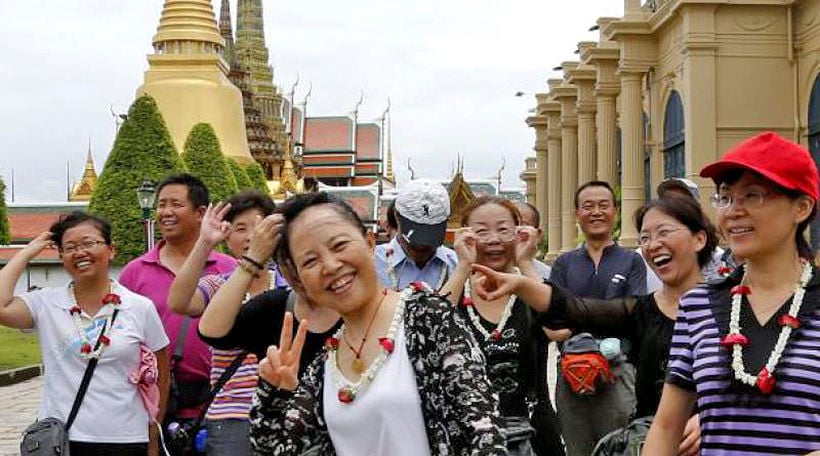China used to be the world’s most abundant supplier of international Chinese tourists, Thailand and Southeast Asia was one of their most popular destinations. The accumulation happened swiftly. Tourism became available to China’s rapidly rising middle class as wealth, a growing surplus of leisure time, and a loosening of official travel regulations. The number of travellers increased from 47.7 million to 154.63 million between 2009 and 2019.
These newcomers spent lavishly. In 2019, Chinese tourists contributed for one-fifth of foreign tourism spending, or US$255 billion. The impact on Southeast Asia was enormous. In 2019, tourism receipts contributed for 5.7% of Malaysia’s GDP, with Chinese tourists accounting for 17.8% of the money. Similarly, tourism contributed 11.4% of Thailand’s GDP, with Chinese spending accounting for 28.1%.
Covid halted the trend, but many governments and businesses expected it to be just temporary. That turned out to be incorrect. Chinese tourists plummeted below 2000 levels in 2021, totaling 8.5 million worldwide; arrivals in Southeast Asia were minimal.
For example, Chinese arrivals in Malaysia fell to 7,701 for the entire year 2021, down from 3.1 million in 2019. In 2021, there were 13,043 Chinese arrivals in Thailand, a precipitous reduction from the 11 million who visited in 2019. So far, the rebound has been dismal. Chinese bookings for summer tours in Malaysia are 30% lower than they were before the outbreak, and 10% lower in Thailand.
Will the Chinese tourists come back?
There are various issues. Flight capacity has not returned to 2019 levels, particularly between China and Southeast Asia, and China’s economic slowdown has made consumers wary. Both issues will be resolved eventually, but the Southeast Asian tourist industry should not expect a return to the roaring 2010s.
Long-term structural problems occur. For starters, younger Chinese are less interested in the group travel experiences that have long characterised Chinese vacations, which their parents have taken overseas.
According to a recent survey of 2,000 likely Chinese visitors, 76% want “fewer people” and fewer itineraries influenced by online posts. Today’s Chinese travellers, on the other hand, are looking for “niche” experiences that provide access to distinctive cultural sites. Phuket’s busy beaches and restaurant chains such as Din Tai Fung do not qualify.
Second, Chinese consumers are spending more money at home, particularly on luxury items. Despite accounting for 35% of the global luxury market in 2019, Chinese buyers made only 11% of their purchases in China due to high domestic taxes. The luxury boutiques and duty-free shops in Bangkok, Phuket, and Kuala Lumpur benefited. However, thanks to a government initiative to open duty-free stores at home, luxury sales in China are rapidly expanding and might account for roughly 90% of Asia-Pacific duty-free sales within a few years.
Finally, there is always the possibility of politically driven disruptions. For example, in 2017, China prohibited Chinese tour groups from visiting South Korea in retaliation for the deployment of a US-built missile defence system, costing South Korean businesses billions of dollars. Southeast Asia has yet to see a tourist trade retaliation, but as tensions in the South China Sea rise, tourism-dependent countries must brace themselves for pressure. Southeast Asia has to put out a bigger welcome mat.
Thailand’s Tourism Authority Targets Indian Tourists
Destinations throughout the region fostered growth by tailoring hotels and other travel experiences for Chinese tourists, extending air lines, simplifying visa requirements, and creating marketing relationships in China.
In the short run, Southeast Asian countries will be unable to compensate for China’s missing tourists. However, governments should boost tourism marketing and outreach to other countries with expanding middle classes in the long run. India is an excellent place to begin. It has a booming airline sector and an increasingly affluent populace, similar to China in the 1990s.
The Asian Development Bank (ADB) stated earlier this year that India may become “the next China” in terms of outbound tourism. It makes a valid point. In May, Indian tourists exceeded Chinese tourists in Singapore, and the trend is continuing in other parts of the region.
To cultivate the Indian tourist market, Thailand and other nations will need to take many of the same steps that they have long taken with China: relax visa regulations, develop air connectivity, and aid hotels, restaurants, and attractions in customising their offerings for Indian guests. India will take a long time to make up for the drop in Chinese tourists.
Southeast Asia, on the other hand, positions itself for a more sustainable tourism business by diversifying its tourist marketing. For years, the region has rolled out the red carpet for China. India and other countries should also be invited.






